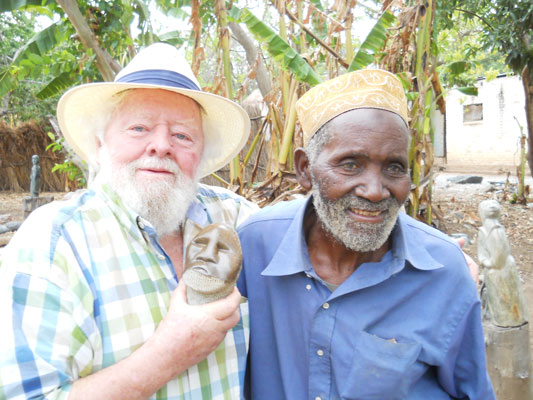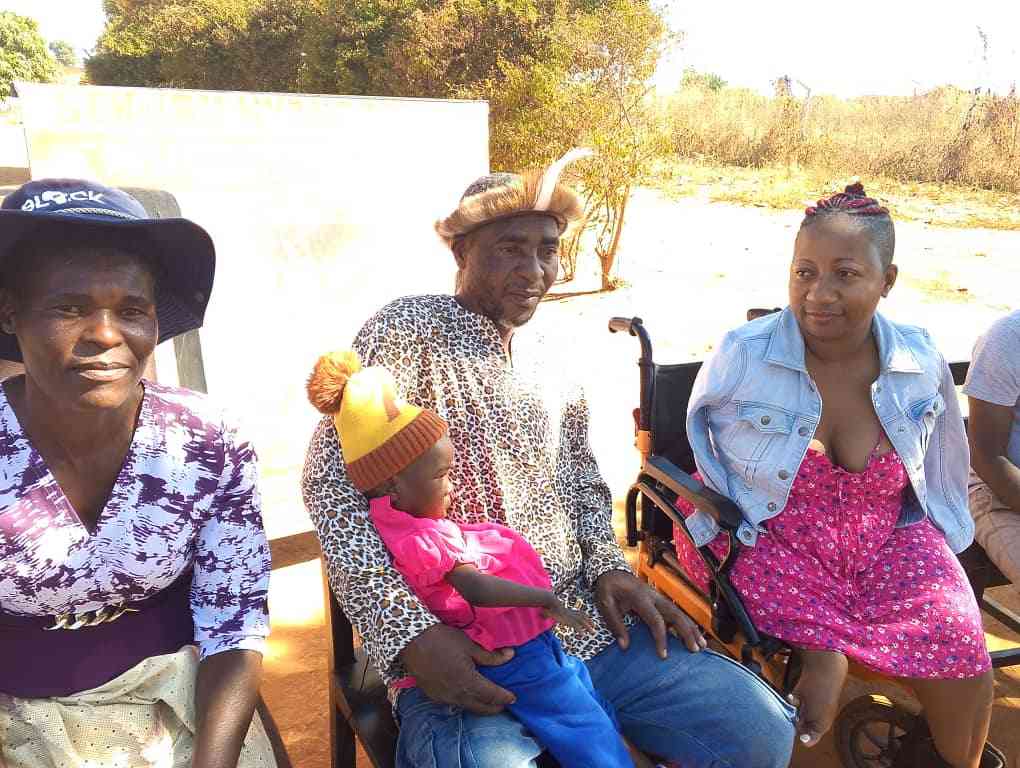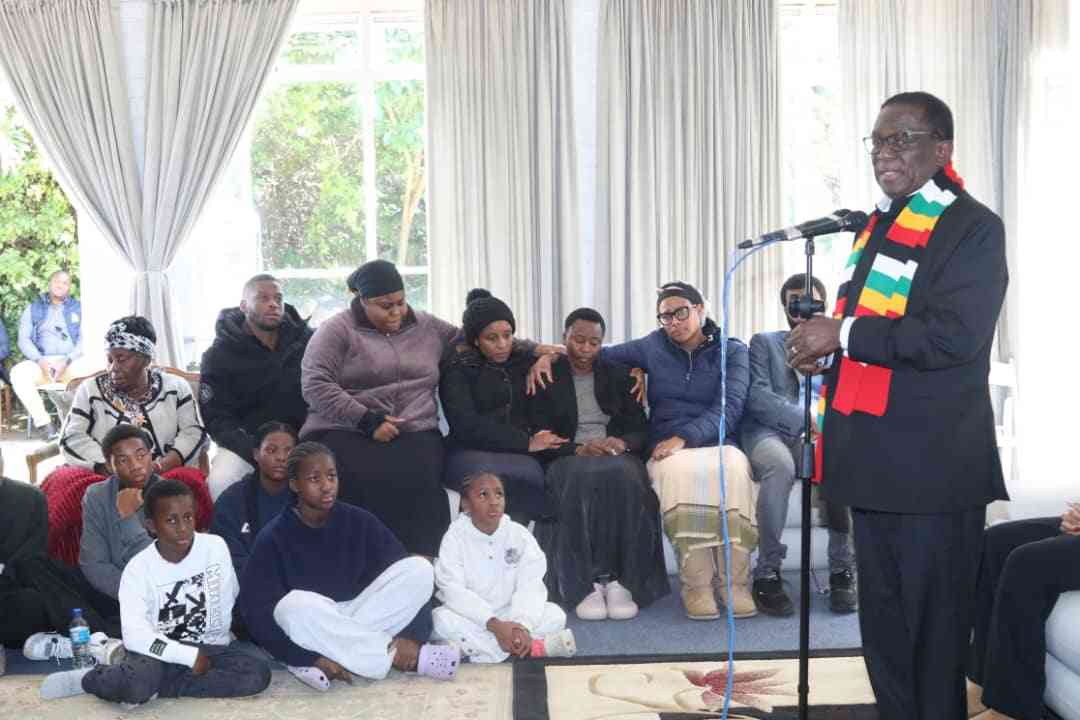
By Grant Moyo
The late Tom Blomefield’s son, Steve, has described his father as an iconic sculptor who was an extraordinary African artist and a significant man way ahead of his time. The iconic figure died in his sleep at a nursing home in the Netherlands on April 9.
Blomefield was born in South Africa on May 3, 1926. Growing up, he lived in Durban and Johannesburg before he relocated to Rhodesia, now Zimbabwe, when he was 20 years old. In 1966 he established Tengenenge Arts Centre in his back yard with the help of Joseph Ndandarika, an artist who taught him how to make sculptures.
When Zimbabwe became independent in 1980, art buyers, gallery owners and tourists started flocking to Tengenenge Arts Centre to buy container loads of sculptures. Soon after, Tengenenge Arts Centre artists were exhibiting in the Museum of Modern Art in New York, in the United States.
Steve gave an insight into his late father’s life as a sculptor and his role in the growth of the Tengenenge arts community in Mashonaland Central province.
“My father was a man ahead of his time. He moved up to Rhodesia to make his fortune when he was about 20 years old,” Steve said.
“After courting my mother Mary, a trained nurse and nursery school teacher, they went to Zambia, but came back to the same farming area soon after.
“In those days the British government was giving 3 000-acre farms at 10 shillings [one pound sterling] per acre, with very favourable lending terms.
- Chamisa under fire over US$120K donation
- Mavhunga puts DeMbare into Chibuku quarterfinals
- Pension funds bet on Cabora Bassa oilfields
- Councils defy govt fire tender directive
Keep Reading
“He applied for one and got Tengenenge farm. On this farm there was black serpentine, the best sculpting stone in Zimbabwe. This discovery came into use later.”
Steve acknowledged that during those days farming was difficult since the Ian Smith-led Rhodesian government was under sanctions.
He said Blomefield sold the farm and moved up to a mining claim to live in a grass hut, and started the Tengenenge arts community.
“His love for art started when he saw his mother painting good pictures and selling them. I have one of them,” Steve said.
“Although he became a farmer for a while, his interest in art came through when he started to make jewellery from local semi-precious stones, and portraits made from white clay.
“When Ndandarika, a Shona artist, came to teach him sculpture, he was the right man at the right time. The move marked the birth of Tengenenge art in 1966 in his backyard.
“Soon the cook, gardener, carpenter, tobacco supervisor, and many from the labour force joined him.
“Years later, my father took one of his sculptures titled A girl turning into a swan to the national gallery. The gallery director asked him which art academy he had been trained at. He said he learned the craft under the supervision of a Shona artist. The director was enchanted.”
Steve noted that Rhodesian farmers were deeply racist as they despised Africans, but his father was inclusive, he recognised the genius in black people and respected them.
He pointed out that there were no European artists in Zimbabwe that were able to create sculptures like the Tengenenge artists.
“Pre-independent Zimbabwe was very difficult for my father due to sanctions. Rhodesian racists — from politicians to local farmers — were a problem,” Steve said.
“British sanctions were a problem and art buyers stopped coming. The Chimurenga war, ‘Robert Mugabe versus Ian Smith’, was a problem. People were too scared to come to Tengenenge. Landmines and guerilla attacks prevented buyers from coming to Tengenenge.”
After independence in 1980, Tengenenge became a hothouse of art. Ordinary rural farmers discovered they had creative talent. They travelled to Germany and the Netherlands to train sculptors in Tengenenge-style sculpture.
The artists made sculptures without a marquette (the clay model of the proposed sculpture), by seeing the sculpture within the stone, taking advantage of the grain of the stone.
“After independence people in the arts fraternity and art lovers flocked to Tengenenge to buy sculptures. Very soon 3 000 rural farmers, farm workers, Malawians, Angolans and others flocked to Tengenenge to learn art. Tengenenge exhibited all over the world, especially in Europe and Australia, as well as in the US and Japan,” Steve said.
He described the role his father played in turning farm workers into international artists as noteworthy. He, however, is still displeased by the injustices that led to his father’s constrained retirement.
“In 2000 the late former president Robert Mugabe began his farm invasions, taking farms from white settlers and giving them to black Zimbabweans. “From then on there were several attempts to hijack Tengenenge,” Steve said.
“In 2005 a local politician attempted to take over. A few years later Mugabe declared that white people were to hand over their businesses and mines to indigenous Zimbabweans.
“I advised my father to retire and hand over Tengenenge to a qualified person and he did. I’m happy with Dominic Benhura.”
Blomefield retired to the Netherlands where he spent the rest of his life till his passing-on. He had friends from the art business, and a social club for older people.
“In his last days we were able to contact him through e-mail, WhatsApp and Skype. He gradually got older and less capable. Beginning of March this year, we heard his health was failing,” Steve said.
“His organs began to shut down towards the end of March, and in April he dearly departed in a nursing home in Holland. My father died in his sleep peacefully.
“Sadly, we could not meet him as the coronavirus outbreak made it impossible to go there and come back.”
Tom’s great works are archived on most of the well-known television networks and in newspapers all over the world.
He could have died in his finest creation, the Tengenenge arts community, a place which made the black serpentine a renowned sculpting stone.
l Grant Moyo is a prolific writer, innovative media personality, entrepreneur and a creative artist who is passionate about using his creative mind for the betterment of society. Follow him on Twitter: @TotemGrant











